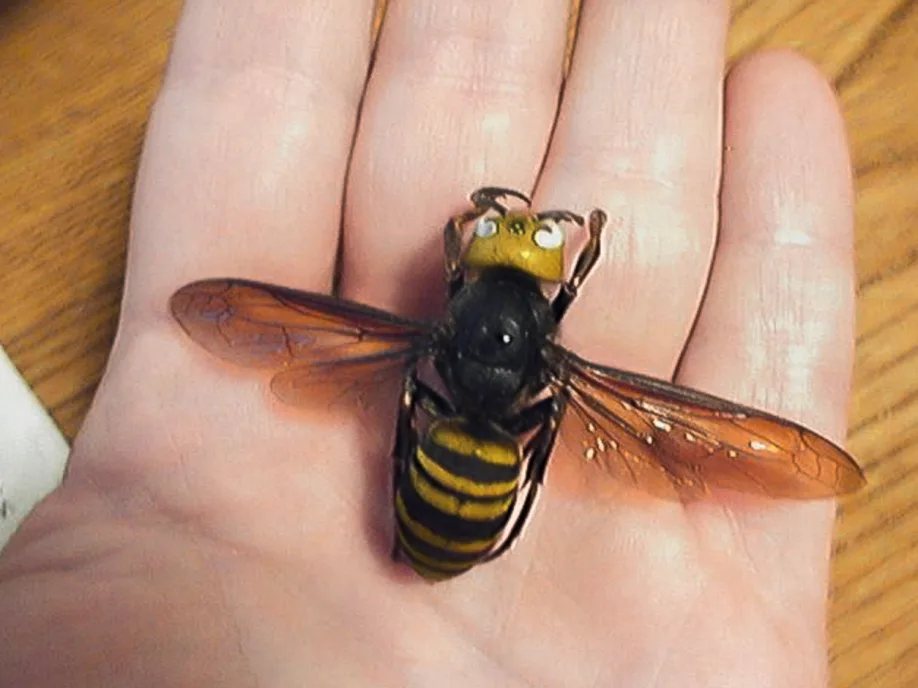
What scientists found in a 'murder hornet' nest
Scientists found tracked and destroyed a murder hornet's nest near a Canadian-U.S. border.
Sven-Erik Spichiger is the entomologist leading the rally to kill the Asian giant hornet, aka the "murder hornet." What a job.
Spichiger and his team recently found a nest near British Columbia containing 500 of these menacing-looking critters; almost 200 of them were queens. Worst pinata ever.
The team opened up the nest to find 190 larvae, 108 pupae (the stage after larvae) which were almost all queens, 112 workers, and 76 queens ready to start their own little nests of nightmares.

Photo credit: Washington State Department of Agriculture
Murder hornets are dangerous to both humans and honey bees.
Spichiger said that "we got there just in the nick of time," but he can't promise that queens didn't escape before the nest was found.
Asian giant hornets are an invasive species in the U.S. and Canada. They measure in at five centimetres and are the world's largest hornet.
Though the hornets are a risk to American and Canadian honey bees, and the crops they pollinate, they aren't as deadly to humans as they look or sound.
Once you get the nickname of "murder hornets," it's hard to get some redeeming media coverage. But in Asia, these hornets cause around a few dozen deaths per year, which is comparable to American hornets, wasps, and bees who kill an average of 62 people per year.
The hornet nest, which was around the size of a basketball, was found in an already destroyed tree in Whatcom County near the B.C. border.

Photo credit: Washington State Department of Agriculture
The scientists located the nest by using dental floss to attach radio trackers to a few hornets. Though this particular nest was found stateside, there have been murder hornets spotted in B.C.
Spichiger's goal is to wipe out the species before they can establish in the territory but currently doesn't know how many hornets there are in the area.
Thumbnail credit: Wikipedia










